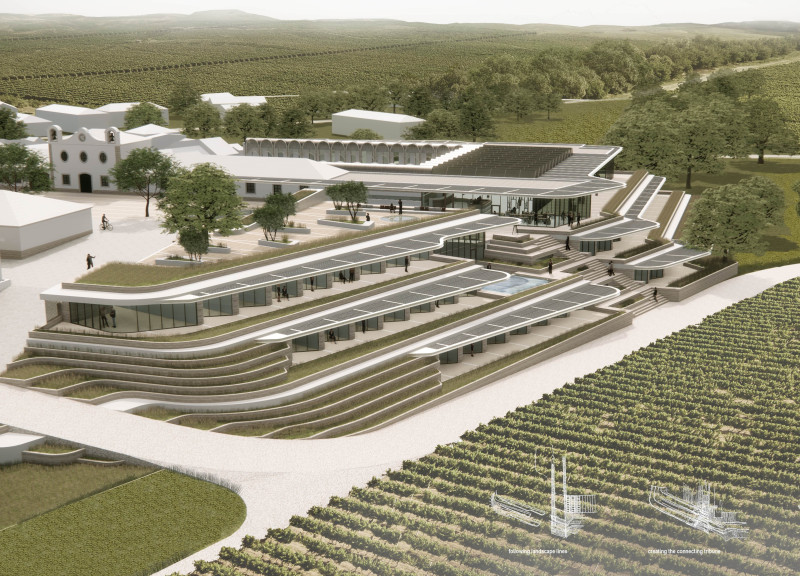5 key facts about this project
The Wine Hotel Monte D'Oiro presents a thoughtful integration of architecture and landscape within the context of a vineyard in Portugal. Designed to offer an immersive experience that reflects the local environment, the project serves both hospitality and leisure functions, appealing to wine enthusiasts and visitors seeking a connection with nature.
The architecture of the Wine Hotel Monte D'Oiro demonstrates a commitment to materiality and sustainability. By utilizing locally sourced materials, the design maintains a contextual relevance that enhances its connection to the surrounding vineyards. Concrete is employed for its structural integrity, while glass allows ample natural light to penetrate the interior spaces, creating a seamless flow between indoor and outdoor environments. Wood is incorporated to add warmth and human scale, while natural stone paths lead guests through the meticulously landscaped grounds.
The project’s layout features three distinct levels that follow the natural topography, allowing for fluid transitions between spaces. This vertical design not only maximizes views of the vineyard but also encourages exploration of the hotel’s features, which include a swimming pool, gardens, and event areas. The strategic placement of terraces enhances the guest experience by providing multiple vantage points and outdoor relaxation spaces.
Sustainability is a key focus of the Wine Hotel Monte D'Oiro. The design promotes energy efficiency through green roof systems and the potential incorporation of solar panels, aligning with modern architectural practices that strive for minimal ecological impact. The landscaping incorporates indigenous flora, creating a habitat that supports local biodiversity while adding to the aesthetic value of the grounds.
Distinctive to this project is the emphasis on sensory engagement, created through spatial dynamics and visual transparency. Large glass facades facilitate a dialogue between guests and the vineyard scenery, allowing visitors to immerse themselves in the seasonal transitions of the winery. The architecture fosters a deep connection to the surrounding landscape, enhancing the overall experience of the hotel.
The Wine Hotel Monte D'Oiro highlights the importance of integrating hospitality with local culture. The design offers guests a direct relationship with the vineyard, facilitating activities that revolve around wine appreciation. This engagement reinforces the hotel’s identity as more than just a place to stay; it becomes part of the wine journey itself.
For further understanding of the architectural principles and design strategies at play, interested readers are encouraged to explore the project presentation, particularly focusing on architectural plans, architectural sections, and architectural designs for a comprehensive insight into this unique project.





















































